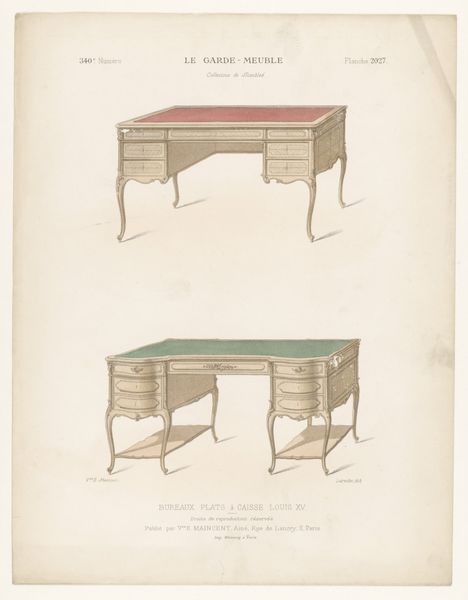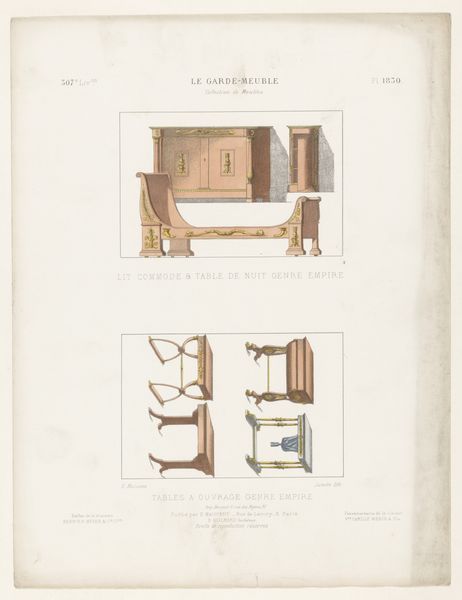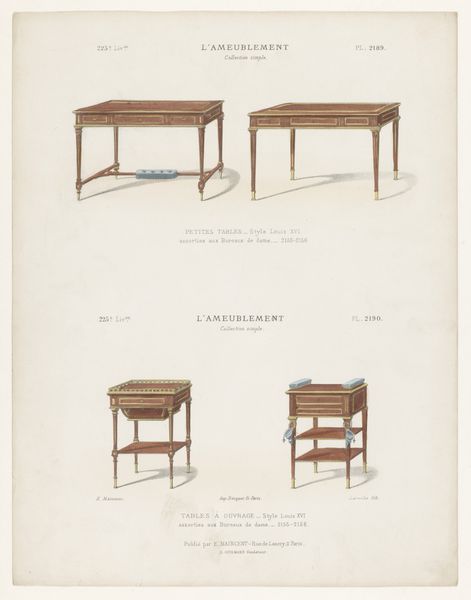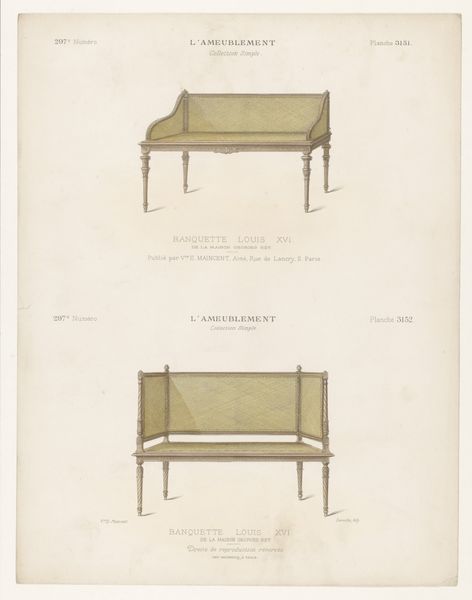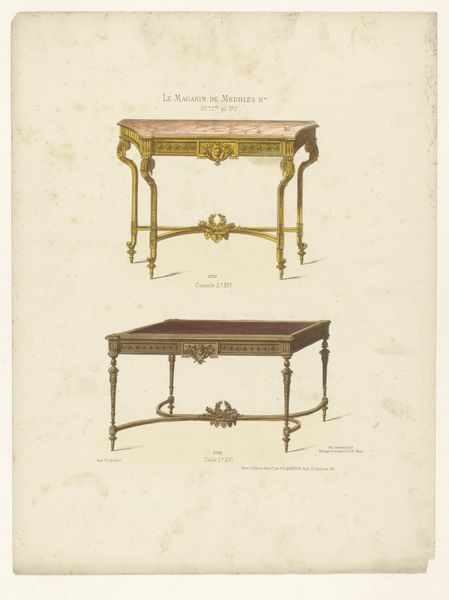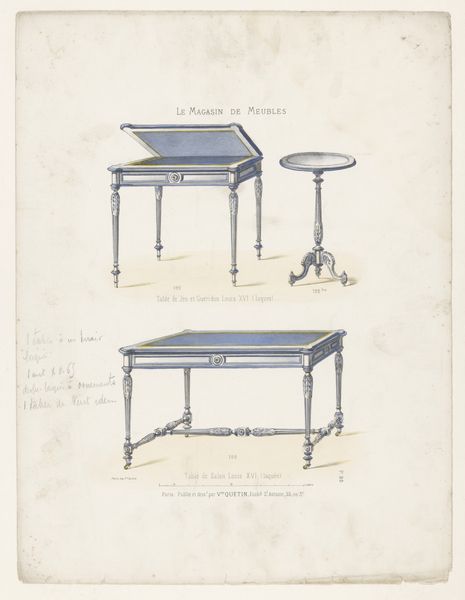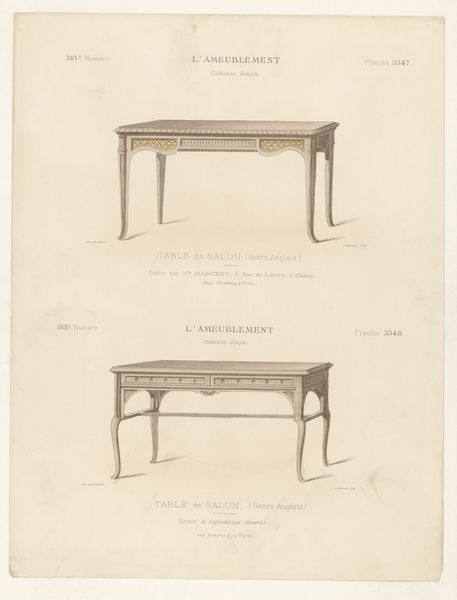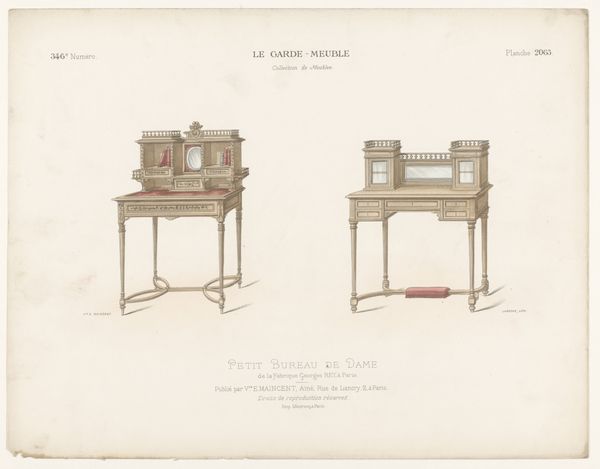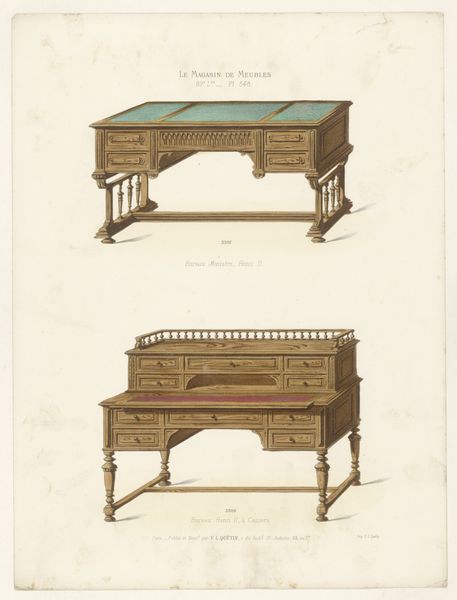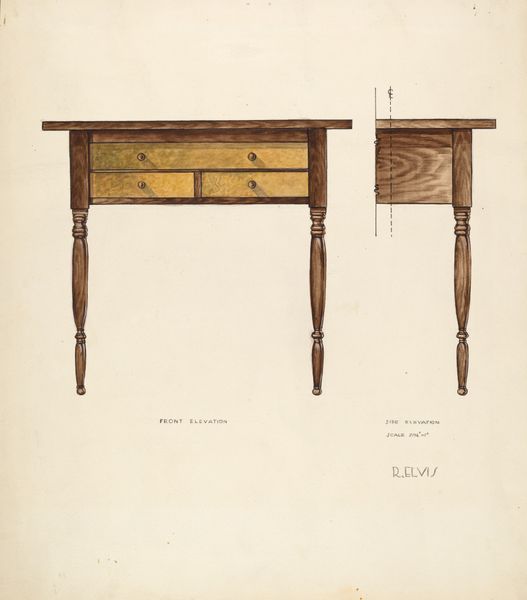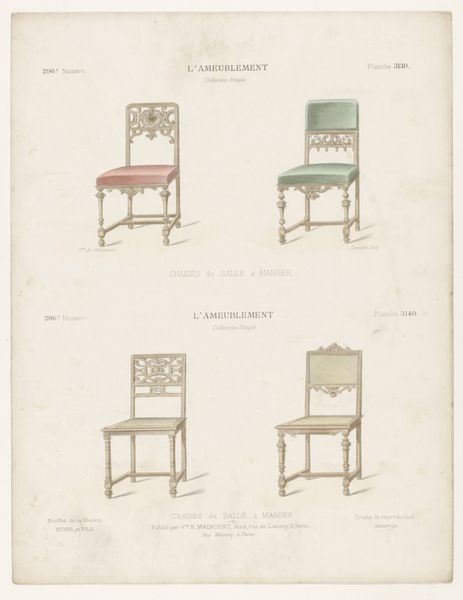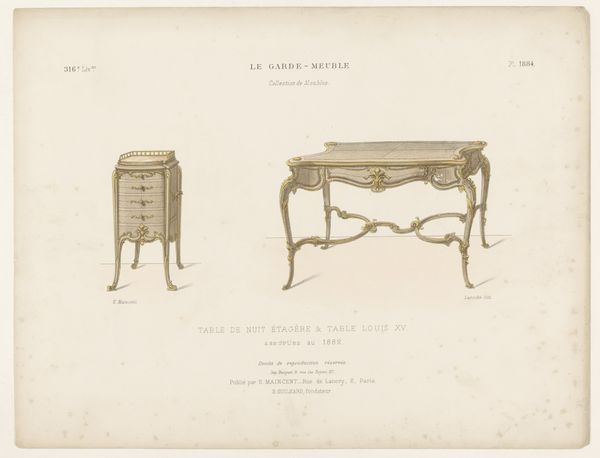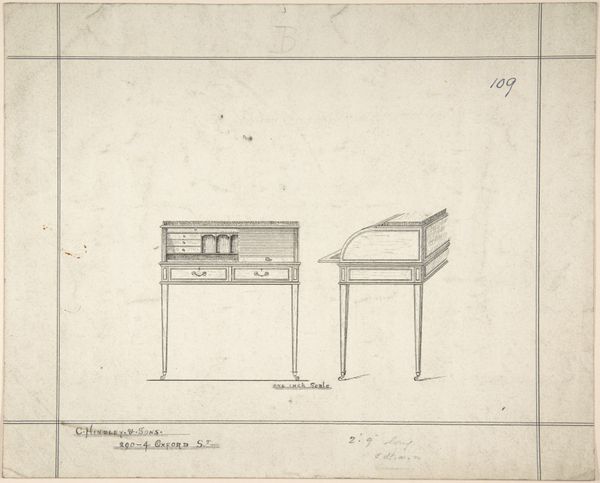
drawing, pencil
#
drawing
#
pencil
#
academic-art
#
decorative-art
Dimensions: height 355 mm, width 280 mm
Copyright: Rijks Museum: Open Domain
Curator: Looking at this sheet titled "Twee bureaus", by Léon Laroche, dating back to 1895, I feel a pang of longing, like leafing through forgotten etiquette guides and vintage shop windows. It just whispers of a gentler age. Editor: Yes, it does possess an almost unsettling quaintness. Although the visual representation may lean into more traditional drawing approaches, focusing on line, tone, and detail, I'm immediately struck by the explicit labeling beneath each desk design that reads "Bureau de Dame, Genre Anglais." It certainly underscores how designs for female use became not only marketable, but were subject to processes of commodification and gendered marketing. Curator: Precisely! The delicacy is deceptive. Look closer; notice the refined decorations in the mirrors of the desks – those swirls speak of secret ambitions and untold stories, each piece a portal. Doesn't it feel as if each design yearns to be inhabited by someone? Editor: Well, when you emphasize the labor, one also finds what could be considered its contradictions: ornate designs manufactured on some sort of production line, geared to generate revenue. How interesting that these objects intended for ‘ladies’ required complex, industrialized processes beyond their supposed realm, and were not crafted specifically by artisans who specialized in luxury production, or unique design work. It makes you think about who these desks were truly made "for," and who they benefitted from materially, economically and socially. Curator: An elegant collision, truly! Laroche's piece makes you ponder the quiet resilience required to pen letters, to keep diaries amidst the clatter of industry, while this object is made from and amidst these processes of consumption and production. These women weren't just writing about tea parties; they were living. These bureaus could symbolize so many inner narratives as material and personal objects. Editor: That’s insightful. By positioning the artist and their subject within a wider web of relationships, from production to reception, Laroche and those using the object both played their part in the social reality reflected. This, ironically, offers a very modern way of observing decorative objects, even beyond the drawing itself. Curator: I will admit that the artist makes these designs appear so touchable; almost usable to me! The more one looks, the less simple it seems. Thank you for pulling the reality behind what would seem "simply decorative." Editor: No thanks needed; it is about thinking about not only what we perceive immediately, but also how they reflect upon the complex network in which everything—everyone—is connected to this art piece, and each other.
Comments
No comments
Be the first to comment and join the conversation on the ultimate creative platform.
